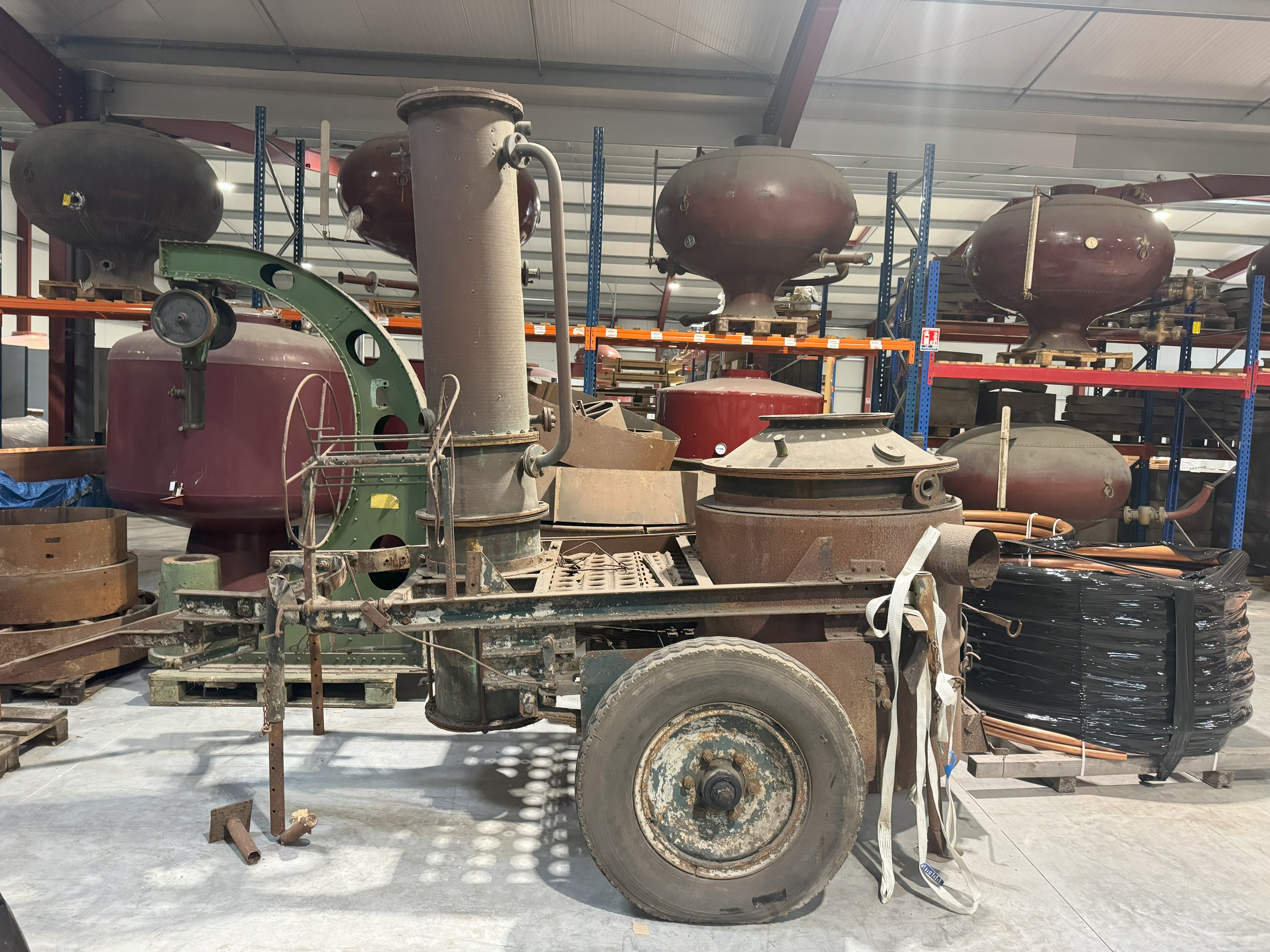In our last newsletter we started an exploration of Calvados with a walk through the orchards and a look at the apples and fermentation of the cider that will become Calvados.
Today we continue the study of the terroir of Calvados – moving from the cider to the distillation and maturation of the spirit. We were surprised and inspired during our visit to Calvados by the techniques that were developed in each multi-generational family owned distillery that adapted to the a cold and damp environment of the area to make a striking and unique spirit. It made us reflect on the contribution of community and education towards the nature of terror and what that means as we seek the terroir of Sonoma County.

Distillation
While a wide range of distillation techniques are used in Calvados, our main interest is the alembic pot still double distillation process most commonly found in the Pays d’Auge region of Calvados. All of the alembics we saw in our travels were produced by Chalvignac Prulho which the same Cognac-based manufacturer that also made our alembic.
Historically alembics in Calvados were heated by burning wood from the orchard, a free and environmentally conscious approach. Most producers we visited have moved to more controllable gas burners, but some found innovative ways to blend of new and old techniques. At Huet they still used wood from the orchard but chip it and feed it to the alembic with an auger (like a Traeger style pellet grill just bigger) to keep the traditional orchard wood fire alive but with improved control.
The alembics of Pays d’Auge are the same as those used in Cognac for their distinctive grape brady product. However, the stills are used quite differently in the different regions. At Ambix we were trained by Cognac distillers who follow distillation protocols taught by the local technical college; therefore the variations of technique and hence spirits are quite subtle. In Calvados there was no local school, and every producer we spoke with had a very different distillation protocol that had been developed by their family over generations. It was amusing to later discuss some of those homegrown protocols with classically trained friends in Cognac who responded with wide eyes and simply said “Non, Non, Non, Don’t do that!”
The question of the impact of education on terroir ferments in our minds. The multi-generation evolutionary farm distilling approach of Calvados where parents pass their family’s technique to their children and the more institutional approach of Cognac where a central university that educates the distillers how to make a consistent product are certainly part of terroir just as much as the climate and geology are. How does this apply to Sonoma County and the start of new traditions?

The double distillation pot still is not the only distillation technique of Calvados. We took a trip down to Domfrontais region of Calvados where they use continuous column stills. Instead of performing two batch distillations, a unique type of column still is used that can run 24/7 without stopping. One must simply keep feeding the preheater with cider, the fire box with wood, and product will flow continuously. While there is less ability to fine tune the procedure, the calvados produced is smoother especially since a pear-heavy blend is used in the Domfrontais region. These stills are more compact and almost always built into a trailer so they can be shared between many small producers. At Pacory, a producer we visited, their wood fired still originally built in 1940 was not in the garage as it had traveled to another producer for the day.

Maturation
When you walk into a barrel room in Calvados you see giant barrels that are often more than 100 years old. Most producers put their new spirit directly into these large ancient barrels for the first couple years of aging. With the large size and extreme age of the barrels minimal color or wood character is imparted into the younger spirits. After a couple years some of this new calvados is used to make pommeau or is sold as young calvados. What remains is then put into smaller barrels for long term aging.
Most Calvados producers we visited exclusively use very old barrels. With few exceptions new barrels were only being purchased out of necessity as a producer expands or when the old barrels were simply no longer usable. This keeps the oak character light, subtle and biased towards more woody notes where any toast or wood characteristics are long since lost.
Spirit went into the barrel at a very high alcohol by volume (abv), typically about 70%. Most spirit producers around the world typically would never enter the barrel as such a high abv as it results in rapid extraction of the tannins from the wood. However, for the giant ancient barrels of calvados, the high abv helps to extract the scraps of oak character still left in the decades old barrels. The high abv of the spirit when it goes into barrel is a developed response of an notable element of the terroir of Calvados, the cold humid air. When one ages spirits in a high humidity environment the abv will to go down with time. In most of the world this is a minor effect, typically less than 0.5% abv per year. In wet and cold Calvados the loss of abv is much faster and we learned that its not uncommon to see the abv of the spirit drop by as much as 2% abv or more per year. For old 20+ year old calvados, it is challenging to prevent the spirit from falling below the lower legal limit of 40% alcohol as it ages.
The weather of Calvados causes the abv of aging spirits to drop more quickly than it does in most climates and this has in turn lead to unique processes of large, old barrels and high abv and results in a flavor profile that is unique to the environment. This interplay of climate, technique and product is at the heart of of terroir and makes agricultural spirits uniquely tied to their home and we look forward to a decades long journey ahead to seek a definition of the terroir of Sonoma County.

Epilogue
We should emphasize that most of our visits were to smaller traditional craft producers. Larger producers will often do things quite differently. We plan to explore and share more of those differences in future travels and writings.
We also visited both Brittany and Cognac during this trip. Again we look forward to future discussions on these regions but to whet your appetite let me share some initial thoughts. As for the ciders and spirits of Brittany, while they do not have the recognition of those from Calvados enjoy they are worthy of the world stage and have a terroir that is unique and compelling and demands more time on future visits. Cognac was interesting to visit as it helped us to understand the immense difference in scale when comparison to Calvados. Cognac production is nearly 50x larger than Calvados and this became very clear when we visited a smaller Cognac producer and saw 10 large alembics in a row all running 24/7 while the well known Calvados producers we visited had just one still that typically was not running when we visited.
For your own trip planning listed below are some of the distilleries that we visited and informed this two part series – all are highly recommended.

